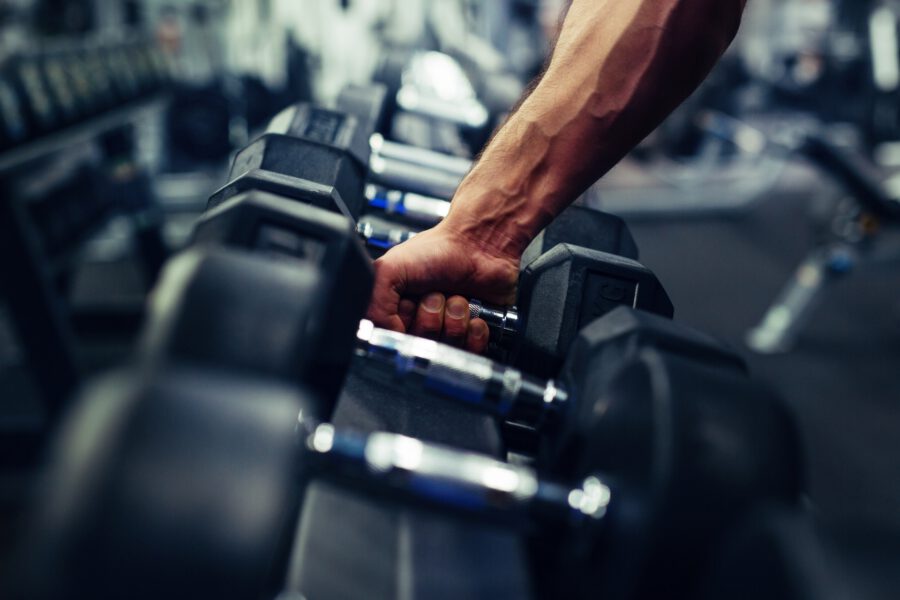7 Tips for Training Intensely for Over 50s
When you make it past 50, your body begins to have limitations. When you’re working out, that means that you have got to make some adjustments in your training.
That doesn’t mean that you have to reduce your intensity and train like a geriatric. It does mean that you need to forget about the gym bro-science that younger guys can get away with and start training smart.
In this article, we reveal six ways to do precisely that.
Unless you are a powerlifter, there is no reason that you should be doing exercises like squats and deadlifts in your 50s. Squats, especially, are terrible for your spine. They load a huge weight on your back which compresses your lower spine, pushing your vertebrae together. Do the leg extensions instead, which places direct emphasis on your quadriceps without putting any compression on your spine.
The majority of gym-goers who have been going at it for more than a decade have problems with their shoulders. That is directly attributable to the overhead press. This is an unnatural exercise that has no relation to the function and natural movement of your shoulder joint. It requires an extreme degree of shoulder joint rotation simply to get into the start position of the exercise. In addition, lifting the arms directly overhead is a common cause of impingement syndrome.
If you are still doing the shoulder press, stop immediately for the sake of your shoulders!
To work your shoulders effectively, perform the side lateral raise with a cable machine that is set at hip level.
As you age, your connective tissues begin to lose elasticity. That makes it harder to comfortably move your limbs through their full range of motion.
When you do an exercise with a barbell, you are unable to move each of your limbs through their natural range of motion. That’s because the fact that you’re holding a fixed bar prevents your wrists, and the joints connected to them, from rotating.
By switching to dumbbells, you overcome the fixed wrist problem. This allows each arm to move more naturally through its full range of motion. Your shoulders, especially, move more freely when you use dumbbells.
As already noted, many long-term trainers have shoulder issues as a result of years of overhead pressing. Switching from barbells to dumbbells will give your shoulders some much-needed love!
When you use dumbbells, you also recruit more stabilizer muscles. This activates more muscle fibers, creating a greater degree of training stress (that’s a good thing!).
Most people are stronger on one side of the body than the other. This imbalance can lead to muscular, postural, and balance problems. Because your arms are working unilaterally with dumbbells, they help to overcome strength imbalances.
Another reason to use dumbbells rather than barbells is that they allow for a greater range of motion. We can illustrate this with the example of the bench press.
When you do the bench press with a barbell, you can only go down as far as your chest. With dumbbells, however, you are able to go down a few inches lower to more fully stretch the pectorals. When you push back up you are also able to bring the hands together to fully contract the pectorals.
Increasing your time under tension will provide you with a means of training intensely without overly stressing your joints. The time under tension (TUT) is the total time that it takes to complete a set. Research has shown that a TUT of between 40-75 seconds is ideal for strength and muscle gains. Most people, however, take around 20 seconds to complete a set.
You can increase your TUT by slowing down on both the concentric (raising) and the eccentric (lowering) part of the rep. Aim to take twice as long to lower the weight as to lift it. You can also hold the fully contracted position for a second.
When you are exercising over the age of 50, you can still use heavy weights. Of course, you need to ensure that you are still as close to perfect form as possible. But you should also use lighter weights for higher reps within the same set. Doing so will allow you to gradually warm up the muscle, provide a progressive overload and work all the muscle fibers of the target muscle group. Here is an effective rep scheme over six total sets that we recommend:
- Set One - 30 reps
- Set Two - 15 reps
- Set Three - 10 reps
- Set Four - 8 reps
- Set Five - 6 reps
A workout program you should check:
Training holistically means exercising not only your muscles but also your cardiovascular system. You should build both weight training and aerobic training, such as cycling, walking or playing a sport into your lifestyle so that you are achieving a minimum of 30 minutes of total exercise per day.
Warming up before working out is always important but it's even more important as you age. Your warm-up should include both an aerobic and an anaerobic component. The aerobic warm-up should consist of 5-10 minutes of medium intensity on an exercise bike or treadmill.
Your anaerobic workout should consist of dynamic stretching movements related to the body parts you will be training that day. These could include arm circles, bodyweight squats, or shoulder rotations.
Passing 50 doesn’t have to mean you can no longer train intensely. Make use of our six intensity hacks to ensure that you are training smarter to protect your body while you continue to make it better.

